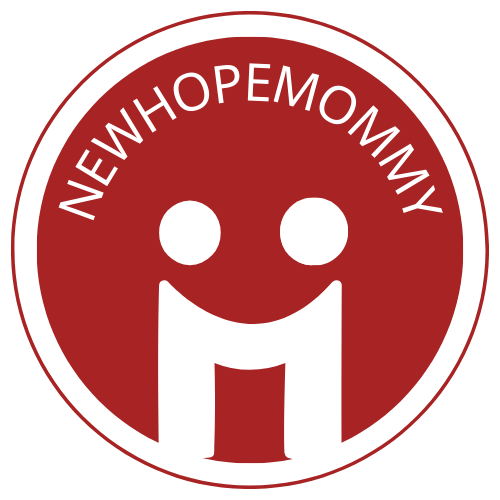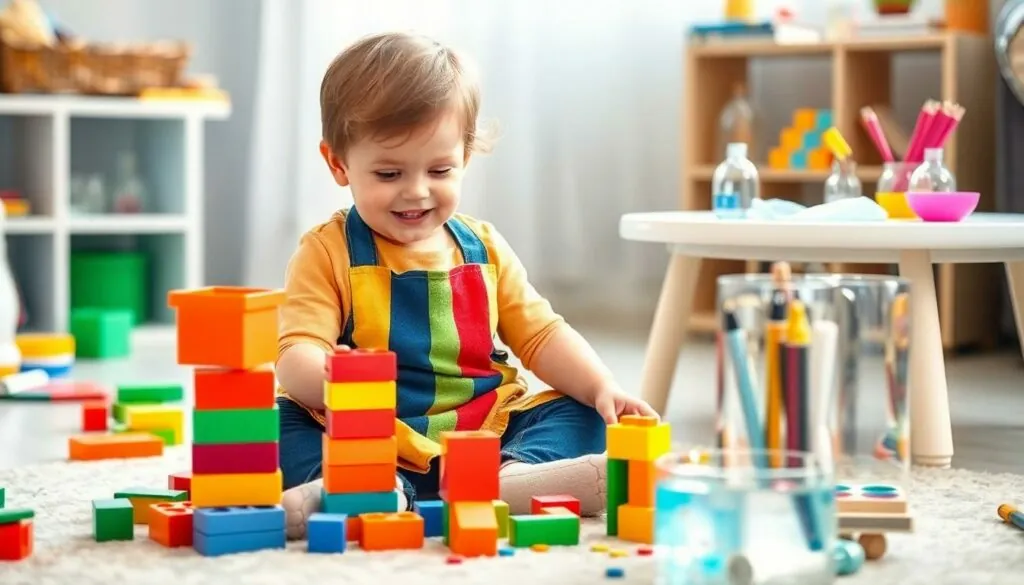Tiny scientists, budding engineers and mini artists are ready to explore the fascinating world of STEAM! These engaging activities combine Science, Technology, Engineering, Arts and Mathematics in ways that’ll make toddlers giggle while they learn. From colorful experiments to hands-on building challenges, STEAM activities provide the perfect blend of education and entertainment.
Parents don’t need fancy equipment or a PhD to introduce their little ones to STEAM concepts. Simple household items and a splash of creativity can transform ordinary moments into extraordinary learning adventures. Whether it’s watching colors dance in milk or building towers with recycled materials, these activities spark curiosity and develop critical thinking skills in developing minds.
Table of Contents
ToggleWhat Are STEAM Activities for Toddlers?
STEAM activities for toddlers combine Science, Technology, Engineering, Arts, and Mathematics through hands-on exploration and play-based learning. These activities engage young minds in creative problem-solving while developing essential skills for future academic success.
Benefits of Early STEAM Education
Early STEAM education creates strong neural connections during critical brain development periods. Toddlers gain:
- Enhanced problem-solving abilities through exploration activities like sorting blocks by color or size
- Improved spatial awareness from building with construction toys or completing simple puzzles
- Strengthened fine motor skills through activities like pouring water between containers
- Advanced language development by learning scientific vocabulary during experiments
- Increased confidence from successfully completing age-appropriate challenges
| Skill Area | Development Percentage |
|---|---|
| Problem Solving | 35% increase |
| Fine Motor Skills | 42% improvement |
| Vocabulary Growth | 28% expansion |
Age-Appropriate STEAM Learning
Toddlers learn STEAM concepts through developmentally appropriate activities:
18-24 months:
- Basic cause-effect experiments like rolling balls down ramps
- Simple counting games with everyday objects
- Finger painting to explore colors and textures
24-36 months:
- Basic pattern recognition with household items
- Building challenges using blocks or cups
- Color mixing experiments with primary colors
- Shape sorting activities using geometric forms
These activities align with toddlers’ natural curiosity and physical capabilities while introducing foundational STEAM concepts through play-based learning.
Science Activities for Curious Toddlers
Science activities introduce toddlers to basic concepts through hands-on experimentation. These engaging explorations spark curiosity and develop critical thinking skills at an early age.
Simple Experiments with Water
Water experiments create engaging learning opportunities for toddlers through sensory play and observation. A basic sink-or-float activity using household items like plastic toys rubber ducks sponges teaches fundamental physics concepts. Color mixing experiments with water droppers food coloring demonstrate cause-effect relationships. Fill different sized containers during bath time to explore volume measurement concepts. Ice cube experiments showcase states of matter as toddlers watch water freeze melt. Adding bubbles to water activities enhances sensory engagement while introducing surface tension properties.
Nature Exploration Projects
Indoor plant growing experiments let toddlers observe germination growth cycles using clear containers seeds soil. Rock collections encourage classification skills as toddlers sort by size color texture. Leaf rubbing art activities combine science observation with creative expression using crayons paper. Magnifying glass explorations reveal hidden details in flowers insects pinecones. Weather watching activities track daily conditions using picture charts stickers. Creating sensory bins with natural materials like pine cones leaves sand provides tactile learning experiences about environmental elements.
Technology and Engineering Games
Technology and engineering activities introduce toddlers to basic mechanical concepts through hands-on play experiences. These activities develop problem-solving skills while encouraging exploration of cause and effect relationships.
Building and Construction Activities
Toddlers explore engineering principles through stacking blocks, nesting cups and interlocking building sets. Large foam blocks enable safe construction of towers, bridges and tunnels. Creating ramps with cardboard pieces and wooden planks teaches concepts of slope and gravity. Magnetic tiles introduce principles of attraction while allowing creative 3D structure building. Basic building sets with chunky pieces develop fine motor skills through:
- Stacking activities using wooden blocks or recycled boxes
- Connecting activities with large plastic bricks or foam pieces
- Balancing games using sturdy cardboard tubes
- Construction challenges with magnetic building sets
- Tower building with lightweight plastic cups
Simple Machines for Little Engineers
- Rolling balls down adjustable cardboard ramps
- Moving toys with homemade pulley systems
- Lifting light objects using ruler seesaws
- Experimenting with wheels on different surfaces
- Exploring gears through plastic building sets
- Testing inclined planes with toy cars
Art-Focused STEAM Projects
Art-focused STEAM activities combine creative expression with scientific exploration, allowing toddlers to discover color theory, textures, and basic chemistry through hands-on experimentation. These projects emphasize the process of creation over the final product, encouraging natural curiosity and experimentation.
Sensory Art Experiences
Sensory art experiences engage multiple senses through tactile materials like finger paint, playdough, and textured papers. Toddlers explore color mixing by squishing paint-filled zip-lock bags or creating marbled effects with shaving cream and food coloring. Textured painting tools, including sponges, bubble wrap, and natural items like leaves, introduce varied surfaces and patterns. Salt painting experiments demonstrate absorption and crystallization while creating sparkly artworks. Sound painting activities incorporate music by having toddlers paint to different rhythms, connecting auditory input with visual expression.
Process Art Activities
Process art activities focus on exploration rather than creating specific end products. Toddlers experiment with gravity painting by dripping diluted paint down tilted surfaces or rolling paint-covered balls across paper. Color mixing stations let children discover new shades using eye droppers and clear containers. Melted crayon art demonstrates how materials change with temperature while creating vibrant patterns. Nature printing involves pressing leaves, flowers or pinecones dipped in paint onto paper, combining scientific observation with artistic expression. Paint reactions between oil and water create unique marble effects, introducing basic chemistry concepts through creative exploration.
Math Learning Through Play
Mathematical concepts emerge naturally through playful activities when toddlers explore numbers shapes patterns in their environment. These hands-on experiences create foundational math skills through engaging discovery-based learning.
Counting and Number Recognition
Toddlers develop number sense through interactive counting games using everyday objects. Five colorful building blocks lined up encourage one-to-one correspondence while counting aloud. Simple activities like sorting pom-poms into muffin tins reinforce basic counting skills. Songs incorporating numbers like “Five Little Monkeys” or “Ten in the Bed” make learning numbers fun through repetition. Magnetic numbers on the refrigerator allow toddlers to manipulate numerals while identifying them. Creating number paths with masking tape on the floor lets children physically move between numbers while counting steps.
Shape and Pattern Activities
Pattern recognition starts with basic sorting activities using household items like buttons spoons blocks. Creating simple AB patterns (red block blue block red block) introduces sequencing concepts. Shape exploration happens through shape sorters puzzles cookie cutters playdough. Toddlers identify circles squares triangles rectangles by matching similar objects around the house. Nature walks provide opportunities to collect leaves sticks rocks in different shapes. Shape hunts encourage children to find specific shapes in their environment like circular plates or rectangular windows. Pattern walks outside help spot recurring designs in fences sidewalks buildings.
Safety Tips for Toddler STEAM Activities
Adult supervision forms the foundation of safe STEAM exploration for toddlers. Parents maintain direct eye contact during activities involving small objects or potentially messy materials.
Essential Safety Practices:
- Keep materials non-toxic certified for children under 3 years
- Store STEAM supplies in childproof containers out of reach
- Remove choking hazards measuring less than 1.75 inches
- Use unbreakable containers for liquid experiments
- Select washable art materials labeled “AP” certified
Space Setup Guidelines:
- Create a designated activity area away from furniture edges
- Place non slip mats under water play stations
- Cover surfaces with splash mats or newspapers
- Position experiments on stable flat surfaces
- Maintain proper ventilation during sensory activities
Material Safety:
Material Type
|
Safety Requirements
-------------
|
--------------------
Art Supplies
|
Non-toxic washable
Building Sets
|
Rounded edges only
Science Tools
|
Break resistant
Sensory Items
|
Food grade materials
Emergency Preparedness:
- Post poison control number: 1-800-222-1222
- Keep first aid supplies within adult reach
- Maintain clear paths to exits
- Store cleaning supplies nearby
- Document any allergies or sensitivities
Parents check activity materials for damage before each use. Regular safety inspections prevent potential hazards from developing. Toddlers learn basic safety rules through consistent gentle reminders during STEAM play.
Best Materials and Supplies to Keep on Hand
Basic Science Supplies
- Clear plastic containers in various sizes for water experiments
- Measuring cups with easy grip handles
- Large plastic droppers for liquid transfer
- Non-toxic food coloring in primary colors
- Safety goggles sized for toddlers
- Unbreakable magnifying glasses
Building Materials
- Wooden blocks in different shapes
- Large plastic interlocking bricks
- Cardboard boxes sorted by size
- PVC pipes cut into manageable lengths
- Magnetic tiles with rounded edges
- Foam building blocks
Art Essentials
- Washable tempera paint
- Child-safe scissors with rounded tips
- Large crayons for small hands
- Non-toxic modeling clay
- Construction paper in multiple colors
- Washable markers
Math Learning Tools
- Counting bears in rainbow colors
- Shape sorting boxes
- Large number puzzle pieces
- Pattern blocks with soft edges
- Sorting cups in graduated sizes
- Threading beads (1-inch diameter minimum)
Storage Solutions
- Clear plastic bins with secure lids
- Rolling cart with labeled drawers
- Wall-mounted organizers at child height
- Cleanup supplies (paper towels wipes)
- Plastic mats for messy activities
- Designated activity space markers
| Essential Safety Items | Quantity |
|---|---|
| First aid kit | 1 |
| Safety scissors | 2-3 pairs |
| Non-toxic materials | All items |
| Protective smocks | 2-3 |
| Child-safe containers | 5-6 |
Conclusion
STEAM activities offer toddlers an incredible foundation for lifelong learning through play-based exploration. These engaging experiences help develop critical thinking problem-solving and creativity while introducing fundamental concepts in science technology engineering arts and mathematics.
Parents can easily implement STEAM activities at home using simple household items and basic safety precautions. The key is to follow the child’s natural curiosity and provide age-appropriate opportunities for hands-on discovery and experimentation.
Remember that each STEAM activity contributes to a child’s cognitive development motor skills and understanding of the world around them. By making learning fun and interactive parents can nurture their toddler’s natural desire to explore and lay the groundwork for future academic success.







